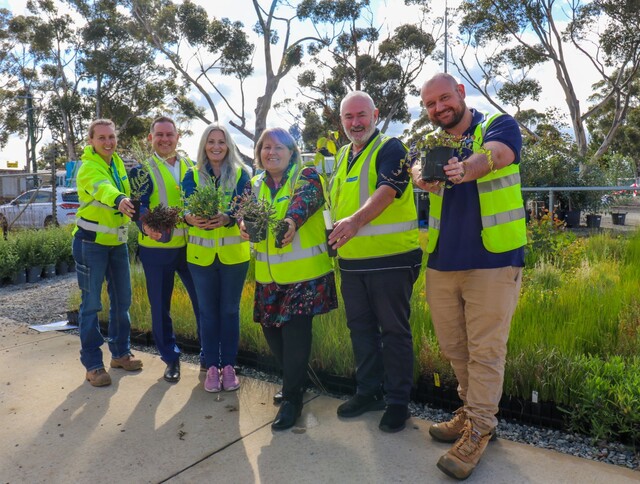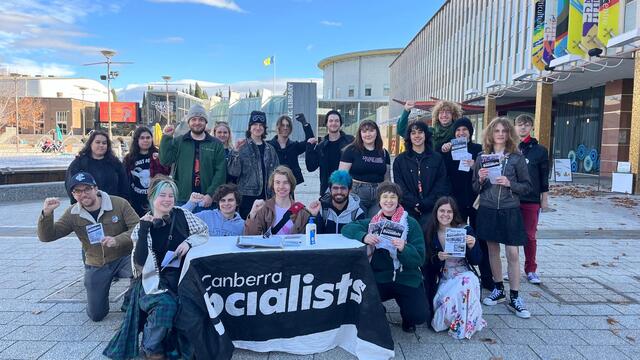The Good Oil by Rod Brown *
As I write Federal agencies are in limbo awaiting the announcement of the election date. Departments are busily preparing briefs for incoming (or returning) Ministers, and processing grant applications. Meanwhile the politicians and journalists are in a lather. The Silly Season is in full swing.
Judging by the number of grants waiting for a sign off by Ministers, if Prime Minister Howard calls an early election there will be a lot of disappointed grant applicants.
The compression of expenditure commitments into a narrow window, and the accompanying uncertainty for those with funding applications in the system, raises the question of whether it’s time for some sort of code of practice to govern the processing and announcement of government grants.
From where I sit there is a case for a cap to be placed on the percentage of program expenditure that can be announced in the run up to elections. Another option, which the Department of Finance has surely ruminated over, is the introduction of quarterly expenditure allocations without rollovers – this would mean that if Ministers don’t spend their budgets within a specified period, they would lose it. A bit radical perhaps.
On the bright side, the loosening of the Federal Government’s purse strings is well overdue. It would be nice to think that the Australian Government is picking up on the international trend, most noticeable in the European Community, towards increased expenditure on economic and social infrastructure. Will the largesse currently being displayed continue after the election? I doubt it.
But in any case the Prime Minister is correct in pointing out that the States are moving into a much healthier financial position by virtue of GST revenues, and that organisations seeking funding for ‘public interest’ causes should be looking more to State Governments.
Don’t get sniffy
Last month I wrote about techniques you might use to increase your hit rate with funding applications to the Federal Government. One of my readers, formerly a very senior Department of Finance official (and you won’t believe this, but she is a lovely, well adjusted lady!) has written in with some additional, very pithy advice for Local Government people and Federal officials.
“Applicants frequently don’t know whom in the APS to approach informally about the grant,” she said. “Even if they can be advised not to bother with the Minister, they still tend to think that all decisions are made at senior levels and get a bit sniffy when advised to approach the middle ranking real decision maker.
“I have also seen much evidence of exasperation from small operators about the application and acquittal processes. Someone needs to tell the public servants – or better still get them to work with some of the companies they are trying to fund – so they can understand the problems. When you get into some of the remote cattle stations and aboriginal communities we’ve just been to you really see the breadth of the issue.
“At the other end, in my work on government committees, I often see a real lack of expertise in the public servants trying to assess the companies – can’t read balance sheets, profit and loss statements, cash flow etc. It’s no wonder so many grants go belly up.”
Commercial Ready Program
The Federal Department of Industry, Tourism and Resources has announced, in preliminary fashion, its new $1 billion Commercial Ready R&D program. Final details will be unveiled around November. The program will have a strong bias towards SMEs that have R&D to take to the commercialisation phase. This is a major shift in emphasis.
I briefed the Department last month on how networks and cluster agendas could improve the quality of outcomes under the new program. The seminal issue discussed was the importance of people in the innovation process, and how to connect them into international supply chains. The problem is that many SMEs do not connect.
They shun collaboration in the hope of doing it solo and eventually taking the Surfers Paradise option. This could be due to our competitive sport psyche, companies competing in a small domestic market or perhaps the super competitive nature of tendering and grants programs. I have lost count of the times that people have compared us with New Zealand, where companies appear to be more collaborative, innovative and internationally focused.
Investment attraction
One of the constant agendas in US Local Government circles is investment attraction. In Australia the task of wooing international investors is mainly confined to a handful of the bigger councils, and their resource commitment and professionalism is pretty modest compared with most US Local Government agencies.
Well, investment attraction will surely become a major activity for Australian Local Government over the next decade. The reasons include the realisation that councils might as well ‘do it yourself’, or at least be able to work more closely with State and Federal agencies. Another factor is the heightened competition between councils for new investments and jobs growth.
It is thus timely that a capability mapping agenda is now being implemented by some members of the Clusters Asia Pacific network. Pilot maps have been completed and preliminary talks have been held with Federal, State and Local Government agencies. We have some influential US and European agencies interested in our work, and it is intended that ‘hot spots’ in Australia across possibly 40 industry sectors will be highlighted and analysed for the interest of US investors. The FTA will provide a fillip for this mapping activity.
If your local council has a potential interest, please let us know ASAP.
Fat Kids Strategy
This program’s correct title is the ‘Active After School Community Program’ – no wonder wags have renamed it. You might recall that the Prime Minister launched it with some fanfare a few months back with $90 million. Its emphasis is on diet, exercise, lifestyle and so forth (see page 16 for more details).
There is a very good angle for Local Government. The program will employ some 161 regional coordinators around Australia at salaries in the $50-56k range, and aims to assist 3,250 schools. I am thinking that many local councils are already in the same game to varying degrees, and the regional coordinators could work out of council offices, thereby creating some synergy and other spin offs. Winning these grants will be a competitive process, so beware – see my comments above.
Give me a ring if you wish.
* Rod Brown’s Canberra based consultancy group, Australian Project Developments Pty Ltd, specialises in industry/regional development and government liaison. For further information telephone (02) 6231 7261 or email apd@orac.net.au







